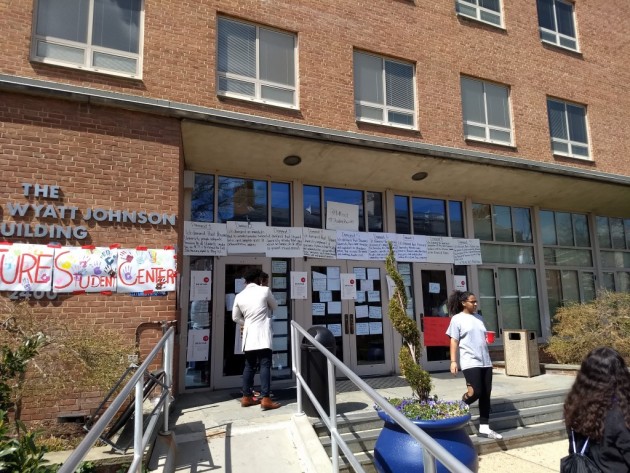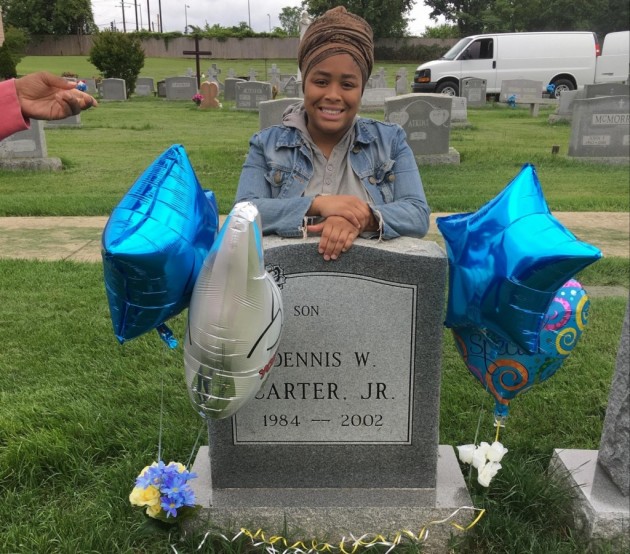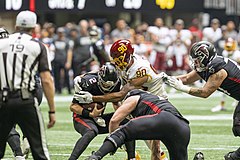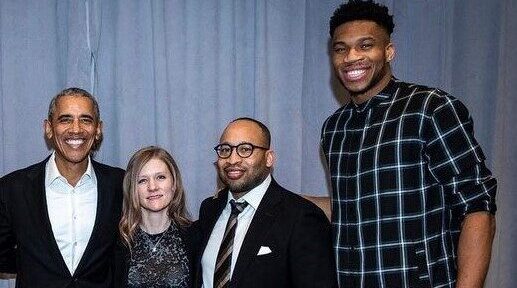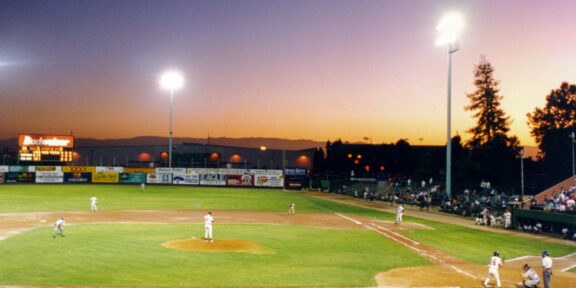Looking around the common area of the Langston Golf Course in Washington, D.C., one thing is obvious: No one is out of place. A young woman and man enjoy a meal from the course’s restaurant. A group of men are engaged in conversation. Others proceed outside to the golf course or watch television. The staff remains ready to offer their services to visitors.
Innocent captivation
Nyles Smith, 39, stands behind the glass display counter of Langston’s pro shop processing golfers’ requests into the computer system.
The best part about working at Langston is “taking care of the people,” Smith says.
As the course’s Head Golf Professional, Smith handles various services, including overseeing the pro shop, organizing tournaments and teaching golf to eager learners. As a teenager, Smith worked at Langston’s driving range. His start in golf began at a young age after his father was introduced to the sport by a friend.
“We were tennis bums. For months and months, [my dad] was trying to encourage my brother and me to give the game a try,” Smith says. “Finally, we came out one day and the first time I hit that ball correctly I instantly became hooked. I put the tennis rackets down, got my golf clubs and the rest is history.”
Managing the Capital City Golf School at Langston is another duty of Smith’s. There are seven instructors at Langston who work with beginning to advanced golfers.
“It’s about sharing time for the purpose of helping them get more out of the game,” Smith says.
Smith is not alone in his strong affinity to golf.
Langston’s General Manager James “Jimmy” Garvin, 54, was led into the game out of curiosity during college while attending an out-of-town baseball clinic. On a baseball scholarship at Howard University, Garvin was coached by former Major League Baseball player Chuck Hinton. Every morning during the trip, Hinton would get up before everyone else to golf.
“I tagged along with him one morning and started shagging balls; and the bug just hit me,” Garvin recalls. More than 30 years later, Garvin is the first black partner and president of Golf Course Specialists Inc.
More than a sport
The allure of golf goes beyond the physical techniques of the game, say employees and visitors to the Langston Golf Course.
“This whole sport is a mental process – visualizing what you want to do and bringing it to fruition,” Smith says.
An athlete all his life and golfing for eight years, Steve Carter, 55, says it has taken him years to hone his game.
“You’re not playing another person,” Carter explains. “You’re actually playing against the golf course. That’s what beats you up.”
Talmadge Cashnowden, 61, has been golfing for nearly 10 years and likes that a day on the course is never the same.
“Everyday is a learning process,” Cashnowden says. “When you think you know it, you really don’t. You can never get enough practice.”
Golfers find that their mindset on the course applies to daily living.
“Golf teaches you discipline that you can equate to life,” says Garvin, who takes his clubs for a swing every day. “When you’re down, you’re not out. There are always 18 holes of golf. Just ’cause you screwup on the first hole does not mean you have to screw up on the second hole.”
Julius Pheney, 59, has the same attitude of perseverance.
“I’ve heard a lot of people get frustrated,” Pheney says. “I don’t. I just try harder.”
Pheney enjoys bringing his 10 and 12-year-old grandchildren to play with him. He frequents the Langston course partly because of its welcoming environment and historical significance, he says.
“You meet a lot of good people,” says Pheney, a golfer for 12 years. “I have yet to meet an angry golfer.”
A nurturing legacy
The Langston Golf Course became in 1939 the country’s first course open to blacks and was named in honor of John Mercer Langston, the first elected black Virginia congressman. The Royal Golf Club and Wake Robin Golf Clubwere instrumental in getting Secretary of the Interior Harold Ickes to approve the establishment of the course. In 1991, the course was added to the National Register of Historic Places.
“I remember when a white person would never come here,” John Mudd, 79, says. “Langston was considered second class.” A member of the U.S. Golf Teachers Federation, Mudd began golfing when Lee Elder, the first black to play in the Masters Tournament, played on the PGA Tour in 1974.
“I knew some of the [black] guys who weren’t able to play at other courses,” says Ernest Andrews, 53.
The men that Andrews speaks of are part of the legacy that echoes throughout Langston and becomes an inspiration for visitors, particularly youth.
Andrews is Assistant Head Professional of the Capital City Golf School at Langston and has been a member of Golf Course Specialists for 27 years. He is also the director of the Mason’s Army youth golf program, founded by golf professional Felton Mason in 1988. Mason’s Army participants, ages 8 to 18, meet at Langston during the summer three days a week for golf lessons.
Amid practicing, youth are advised on important life skills and education, Andrew says.
At age 10, Andrews was a caddy and began playing golf two years later.
“It’s a natural progression from playing golf to teaching golf,” Andrews says.
“Ernest loves the kids,” says 61-year-old Billy Davis, who is a regular of Langston. “He works well with them. Whatever he has is theirs.”
Andrews finds satisfaction in witnessing the individual growth of the youth.
“We call it ‘seeing the lights come on’ — when they finally see that their progress is dependent on their own effort,” Andrews says.
Similar to Mason’s Army in its service to young people, the Jimmy Garvin All Stars is a traveling youth golf program. The program is affiliated with the Jimmy Garvin Legacy Foundation.
Through the program, participants use the training that they receive in golf to teach underprivileged youth during golf clinics held in New Orleans, Atlanta, West Palm Beach and Naples, Fla., and on St. Lucia. Every Martin Luther King Holiday weekend, the All Stars travel to the Bahamas, says Chris Hill, secretary of the JGL Foundation.
“An important thing is these are children teaching children,” Hill explains.
Teaching is the operative word. The All Stars is not merely about learning golf.
“Our main focus is on academics for young people,” Jimmy Garvin says. The program, operating throughout the year, uses the principles of golf to emphasize strengths in educational and personal achievements.
The real success is evident in the transition of the youth from grade school to high school and to college, Hill says.
Garvin and Hill agree that exposure to golf teaches young people how to network with one another – a skill they say students will be able to use in professional and nonprofessional settings.
“The beauty of golf is bringing people together,” Hill says.


